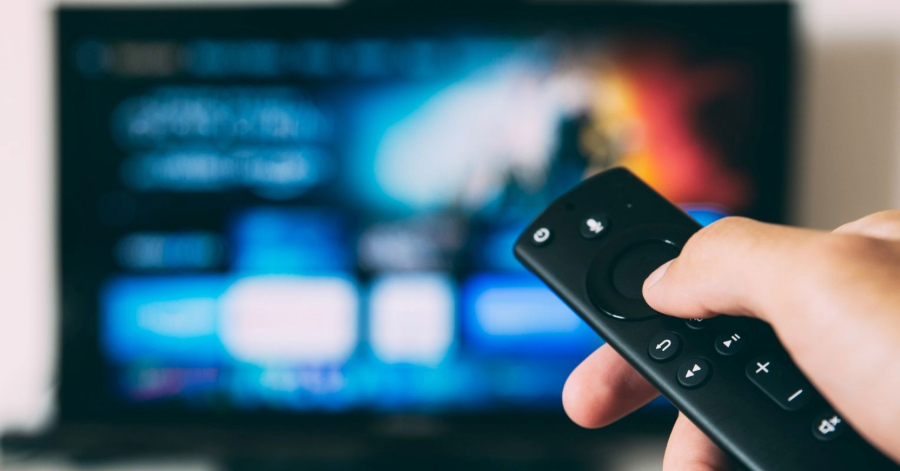Watching Live TV Without Internet
Direct-to-Mobile (D2M) technology aims to broadcast live TV channels directly to mobile phones like TV signals broadcasted to homes. To receive this signal internet connection is not needed.
Broadcasting Mechanisms:
Watching live TV on a mobile phone without the internet typically involves traditional broadcast Mechanisms. Some possible Mechanisms are:
Digital Terrestrial Television (DTT):
DTT involves the transmission of digital television signals over the air using terrestrial broadcast towers. Mobile devices equipped with compatible tuners can receive these signals, allowing users to watch live TV without the need for an internet connection. Standards like DVB-T and ATSC are commonly used for DTT.
DVB-H (Digital Video Broadcasting – Handheld):
DVB-H is a standard specifically designed for the delivery of digital television and multimedia content to handheld devices, including mobile phones. It optimizes the transmission for smaller screens and mobile reception conditions, providing a reliable mechanism for DTM technology.
ISDB-Tmm (Integrated Services Digital Broadcasting – Terrestrial Multimedia):
ISDB-Tmm is a Japanese standard that combines elements of both terrestrial digital broadcasting and mobile communication. It supports the delivery of multimedia content, including live TV, to mobile devices.
One-Seg:
One-Seg is a mobile terrestrial digital audio/video and data broadcasting service used in Japan. It is based on the ISDB-T standard and is optimized for mobile reception. One-Seg allows users to watch live TV broadcasts on their mobile phones.
ATSC 3.0 (NextGen TV):
ATSC 3.0 is an advanced television broadcasting standard that supports mobile reception. It provides improved efficiency, interactivity, and a more robust transmission system. ATSC 3.0 enables broadcasters to deliver live TV content directly to mobile devices.
FM Radio Frequencies:
In some cases, mobile phones equipped with FM radio receivers can leverage FM frequencies to receive audio broadcasts, including live news and entertainment. While this is not TV in the traditional sense, it provides a form of direct content delivery without relying on the Internet.
Satellite Broadcasting:
Satellite broadcasting involves the use of satellites to transmit TV signals directly to mobile devices. Mobile phones equipped with satellite receivers can capture these signals, making it possible to watch live TV in areas with limited terrestrial infrastructure.
Local Area Broadcasting:
In certain scenarios, local broadcasting mechanisms, such as short-range transmitters, can be used to deliver content directly to mobile devices within a specific geographical area. This approach is often employed for localized events or information dissemination.
Core Technologies:
Digital Video Broadcasting (DVB) standards: D2M likely leverages existing DVB standards, like DVB-T2, for efficient digital signal transmission.
Data compression: Advanced compression techniques ensure efficient data transmission within the limited bandwidth of terrestrial signals.
Multiplexing: Multiple TV channels are combined into a single signal using techniques like Frequency Division Multiplexing (FDM) for simultaneous broadcasting.
Conditional Access System (CAS): Encrypts and decrypts content to manage access control and prevent unauthorized viewing.
Technical Challenges
Limited Channel Availability:
Without internet access, the number of available channels is limited. Users may only have access to a few local channels, and international content may be inaccessible.
Antenna and Infrastructure:
Mobile phones might require external antennas or specific hardware components for improved signal reception. Infrastructure for traditional broadcast signals may not be well-established in certain regions.
Battery Consumption:
Streaming live TV without the internet may consume more battery power compared to traditional broadcasting. This can be a significant concern, especially for users with limited access to electricity for charging.
Commercial Challenges
Content Licensing and Distribution:
Securing the rights to broadcast live TV content through traditional means may involve complex licensing agreements and negotiations. Distributing content without the Internet may require partnerships with local broadcasters.
Competition from Internet-based Services:
With the rise of internet-based streaming services, traditional live TV without internet access faces stiff competition. Users may prefer the flexibility and variety offered by online platforms.
Regulatory Compliance:
Meeting regulatory standards for broadcasting may vary across regions, adding complexity to the commercial aspects of providing live TV on mobile phones without the Internet.
The impact of DTM technology on mobile phone behaviour:
Direct-to-Mobile (DTM) technology has the potential to bring about several changes in mobile phone behaviour by offering new possibilities and enhancing user experiences. Here are some ways in which DTM technology may impact mobile phone behaviour
Live Content Consumption:
DTM technology enables users to access live content, including TV broadcasts, without relying on the internet. This may lead to increased consumption of live events, news, and other real-time content on mobile devices.
Improved Access in Remote Areas:
DTM technology, especially in the form of terrestrial broadcasting, can improve access to information and entertainment in remote or underserved areas where internet infrastructure may be limited. Mobile users in such areas can still receive live broadcasts without relying on the internet.
Conservation of Data Usage:
Direct-to-mobile technology does not rely on data-intensive streaming services. This can lead to a reduction in data usage, benefiting users with limited data plans or those in regions where mobile data is expensive.
Emergency Communication:
DTM technology can play a crucial role in emergency communication. In times of disasters or network outages, direct broadcast signals can be used to deliver emergency information directly to mobile devices, ensuring that critical information reaches users promptly.
Additional factors to be considered
The specific implementation of D2M technology, including signal standards, content licensing models, and device compatibility, will significantly impact its user experience and adoption. The role of government regulations and industry collaboration will be crucial in ensuring fair competition, content accessibility, and user privacy. The willingness of consumers to adopt new technology and potentially change their viewing habits will ultimately determine the success of D2M.
While D2M holds promise for positive changes in mobile phone behaviour, its success depends on overcoming technical and commercial challenges and ensuring equitable access and content diversity. It’s important to remember that D2M is still in its early stages, and its long-term impact on mobile phone behaviour remains to be seen.
Source
- https://www.moneycontrol.com/news/india/govt-explores-direct-to-mobile-technology-for-live-tv-channels-without-data-connection-11101251.html
- https://inc42.com/buzz/live-tv-mobiles-without-internet-india-govt-explores-d2m-tech/
- https://www.business-standard.com/india-news/govt-keen-to-bring-in-direct-to-mobile-technology-in-india-by-next-year-124011600805_1.html

